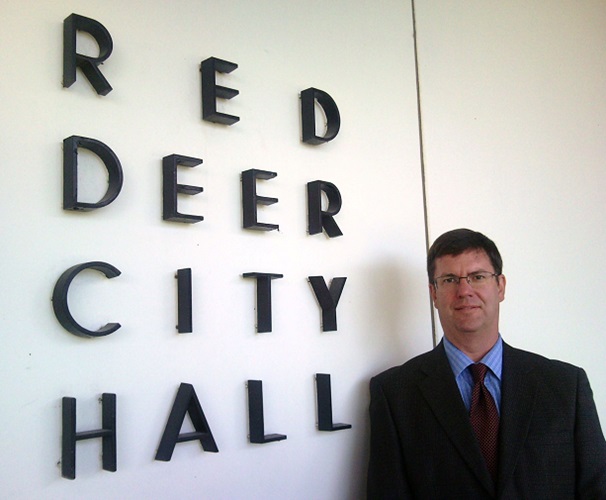Alberta
5 more deaths and 306 new COVID-19 cases. Alberta recognizing volunteers and calling for more.

From the Province of Alberta
Update 40: COVID-19 pandemic in Alberta (April 22 at 4 p.m.)
There are 1,310 confirmed recovered cases in the province, and 306 new cases have been reported, bringing the total number of cases to 3,401.
Five Albertans have died since the last report, bringing the total number of reported deaths to 66.
Latest updates
- Cases have been identified in all zones across the province:
- 2,396 cases in the Calgary zone
- 451 cases in the Edmonton zone
- 303 cases in the South zone
- 150 cases in the North zone
- 79 cases in the Central zone
- 22 cases in zones yet to be confirmed
- Of these cases, there are currently 70 people in hospital, 18 of whom have been admitted to intensive care units (ICU).
- 308 cases are suspected of being community acquired.
- The total deaths are: 42 in the Calgary zone; 14 in the North zone; nine in the Edmonton zone; and one in the Central zone.
- To date, 375 cases have been confirmed at continuing care facilities, and 44 residents at these facilities have died.
- There have been 108,521 people tested for COVID-19 and a total of 113,499 tests performed by the lab. In the last 24 hours, 4,484 tests have been completed.
- Any individual exhibiting symptoms of COVID-19, including cough, fever, runny nose, sore throat or shortness of breath, is eligible for testing. People can access testing by completing the COVID-19 self-assessment online. A separate self-assessment tool is available for health-care and shelter workers, enforcement and first responders.
Access to justice
- The Court of Queen’s Bench has extended limiting hearings to only emergency and urgent matters to May 31 and the adjournment of criminal jury trials and jury selections to Sept. 8. More information:
Mental health supports
Confidential supports are available to help with mental health concerns. The Mental Health Help Line at 1-877-303-2642 and the Addiction Help Line at 1-866-332-2322 are available between 7 a.m. and 11 p.m., seven days a week.
Online resources provide advice on handling stressful situations and ways to talk with children.
Family violence prevention
- A 24-hour Family Violence Information Line is available at 310-1818 to get anonymous help in more than 170 languages.
- Alberta’s One Line for Sexual Violence is available at 1-866-403-8000, from 9 a.m. to 9 p.m.
- Information sheets and other resources on family violence prevention are available at alberta.ca/COVID19.
Turkey hunting season
- Hunters successfully drawn for the upcoming 2020 Merriam’s Turkey Season who are unable to participate due to COVID-19 are asked to not purchase their hunting licence. Their draw priority will be automatically restored following the end of the season.
Quick facts
- The most important measure Albertans can take to prevent respiratory illnesses, including COVID-19, is to practise good hygiene.
- This includes cleaning your hands regularly for at least 20 seconds, avoiding touching your face, coughing or sneezing into your elbow or sleeve, and disposing of tissues appropriately.
- Those with symptoms of COVID-19, including cough, fever, runny nose, sore throat, or shortness of breath, should complete an online COVID-19 self-assessment. After completing the form, there is no need to call 811.
- Support is available to increase staffing of health-care aides and alleviate pressures in contracted continuing care facilities. Read the news release here.
- All Albertans need to work together to overcome COVID-19. Albertans are asked to share acts of kindness they have experienced in their community during this difficult time by using the hashtag #AlbertaCares.
Alberta
Free Alberta Strategy backing Smith’s Provincial Priorities Act

News release from Free Alberta Strategy
Premier Danielle Smith had a message for Ottawa last week.
Keep out.
On Wednesday, the Premier rolled out her latest weapon in the fight against federal intrusions into provincial jurisdiction.
If passed, Bill 18 – the Provincial Priorities Act – aims to align federal funding with provincial priorities, ensuring that said funding reflects Alberta’s interests.
The legislation stipulates that any agreements between the federal government and any provincial entities – including municipalities – must receive provincial approval to be considered valid.
Smith has already given it a nickname: “the stay-out-of-my-backyard bill.”
It’s an apt description of the legislation, especially considering that’s what the federal government has been doing for years – encroaching into Alberta’s jurisdiction.
The legislation shouldn’t come as a surprise to anyone.
We all know that most deals the Alberta government enters into with the federal government don’t work out for Albertans.
We end up paying more in federal taxes than gets spent in federal spending on the programs.
The programs come laden with restrictive conditions that undermine our autonomy, and are often detrimental to our ability to provide the services.
This is especially true with regard to the recent agreement between Ottawa and the provinces that allows the federal government to nationalize childcare.
The childcare agreement has come under heavy criticism due to funding shortfalls in the deal.
It also applies to housing, where despite Alberta accounting for 12% of the national population and experiencing the most rapid population growth, it received a mere 2.5% of the total $1.5 billion in federal housing funding last summer.
Jason Nixon, Minister of Seniors, Community and Social Services, is in charge of housing in Alberta – which is provincial jurisdiction.
On the latest rollout of conditional federal housing handouts, Nixon isn’t buying.
“We will not be bribed, with our own money, to increase the time it takes to get homes built with green energy that makes homes more expensive.”
The theory also applies to the federal government’s latest gambit – doing an end-around provincial negotiations and going directly to municipalities, who seem more interested in taking the money than the conditions attached.
Municipalities are provincial jurisdiction.
Bill 18 mandates that entities within Alberta’s jurisdiction, such as municipalities, universities, school boards, housing agencies, and health authorities, must seek the province’s approval before engaging in, modifying, extending, or renewing agreements with Ottawa.
Agreements between the federal government and provincial entities lacking Alberta’s endorsement will be deemed illegal under this legislation.
That’s Premier Smith’s message.
She’s had enough of it.
“It is not unreasonable for Alberta to demand fairness from Ottawa. They have shown time and again that they will put ideology before practicality, which hurts Alberta families and our economy. We are not going to apologize for continuing to stand up for Albertans so we get the best deal possible.
“Since Ottawa refuses to acknowledge the negative impacts of its overreach, even after losing battles at the Federal and Supreme Courts, we are putting in additional measures to protect our provincial jurisdiction to ensure our province receives our fair share of federal tax dollars and that those dollars are spent on the priorities of Albertans.”
Municipal Affairs Minister Ric McIver had additional thoughts:
“For years, the federal government has been imposing its agenda on Alberta taxpayers through direct funding agreements with cities and other provincial organizations. Not only does Alberta not receive its per capita share of federal taxpayer dollars, the money we do receive is often directed towards initiatives that don’t align with Albertan’s priorities.
“Albertans from all corners of the province expect our federal share of taxes for roads, infrastructure, housing and other priorities – not federal government political pet projects and programs in select communities.”
The Provincial Priorities Act is based on existing provincial legislation in Quebec – called “An Act Respecting the Ministère du Conseil executif” – which prohibits any municipal body from entering into or negotiating an agreement with the federal government or its agencies without express authorization from the Quebec government.
That’s right – the Quebec government has the same rule!
So, this boils down to the same argument we’ve been making for years – if Ottawa wants to step into our backyard, it must first seek Alberta’s approval.
Enough is enough – we won’t stand idly by as our interests are trampled upon.
It’s time for Ottawa to recognize Alberta’s autonomy and respect our right to determine our own future.
At the Free Alberta Strategy, we know that constant vigilance is necessary – for every fence we put up, the federal government tries to find a way around it.
We’ll continue to bring you information about what’s happening in Alberta’s backyard and fighting to keep Ottawa out.
The Free Alberta Strategy Team
Alberta
Building a 21st century transit system for Calgary

From the Frontier Centre for Public Policy
Calgary Transit is mired in the past, building an obsolete transit system designed for an archaic view of a city. Before the pandemic, transit carried 45 percent of downtown Calgary employees to work, but less than 10 percent of workers in the rest of the Calgary urban area, showing that Calgary Transit doesn’t really serve all of Calgary; it mainly serves downtown.
That would have worked in 1909, when Calgary’s first electric streetcars began operating and most jobs were downtown. By 2016, less than 15 percent of Calgary jobs were downtown, and the pandemic has reduced that number further.
Rather than design a transit system that serves the entire urban area, Calgary Transit light-rail system reinforced its downtown focus. Transit ridership has grown since the city’s first light-rail line opened in 1981, but it was growing faster before the light rail began operating than it has since then. Now Calgary Transit is planning even more downtown-oriented light-rail lines.
Light rail is an expensive form of low-capacity transit. The word “light” in light rail refers not to weight but to capacity: the American Public Transportation Association’s transit glossary defines light rail as “an electric railway with a ‘light volume’ traffic capacity.” While a light-rail train can hold a lot of people, for safety reasons a single light-rail line can move no more than about 20 trains per hour in each direction.
By comparison, Portland, Oregon runs 160 buses per hour down certain city streets. An Istanbul busway moves more than 250 buses per hour. Bogota Columbia busways move 350 buses per hour. All these transitways cost far less per mile than light rail yet can move more people per hour.
Once they leave a busway, buses can go on any city street, reaching far more destinations than rail. If a bus breaks down or a street is closed for some reason, other buses can find detours while a single light-rail breakdown can jam up an entire rail line. If transportation patterns change because of a pandemic, the opening of a new economic center, or the decline of an existing center, bus routes can change overnight while rail routes take years and cost hundreds of millions of dollars to change.
To truly serve the entire region, Calgary Transit must recognize that buses are faster, more flexible, and can move more people per hour to more destinations at a lower cost than any rail system. It should also recognize that modern urban areas have many economic centers and use buses to serve all those centers.
Besides downtown, Calgary’s major economic centers—the airport, the University of Calgary, Chinook Center, the Seton health center, and others—are mostly located near freeway on- and off-ramps. Calgary Transit should identify ten or so such centers geographically distributed around the region. It should locate transit centers—which need be no more than curbside parking reserved for buses with some modest bus shelters—near the freeway exchanges closest to each center.
It should then operate frequent (up to five times per hour) non-stop buses from every center to every other center. A few secondary transit centers might have non-stop buses operate to just two or three other centers. Local bus routes should radiate away from each center to serve every neighborhood of the Calgary urban area.
Since non-stop buses will operate at freeway speeds, the average speed of this bus system will be more than double the average speed of Calgary’s current bus-and-rail system. Transit riders will be able to get from any corner of the urban area to any other part of the urban area at speeds competitive with driving.
Such a polycentric system will serve a much higher percentage of the region’s workers and other travelers than the current monocentric system yet cost no more to operate. It will cost far less to build than a single rail line since most of the necessary infrastructure already exists. While some may worry that buses will get caught in congestion, the solution is to fix congestion for everyone, not spend billions on a slow rail system that only serves a few people in the region.
It is time for Calgary Transit to enter the 21st century. A polycentric bus system may be the best way to do it.
Randal O’Toole is a transportation policy analyst and author of Building 21st Century Transit Systems for Canadian Cities.
-

 Housing2 days ago
Housing2 days agoTrudeau admits immigration too much for Canada to ‘absorb’ but keeps target at record high
-

 Censorship Industrial Complex2 days ago
Censorship Industrial Complex2 days agoTrudeau’s new online censorship law – Problems with Bill C-63 / the Online Arms Law
-

 Business2 days ago
Business2 days agoDecarbonization deal opens new chapter in Alberta-Japan relationship
-

 2024 City Councilor By-Election2 days ago
2024 City Councilor By-Election2 days agoGet to know your candidates for city council: Calvin Yzerman
-

 2024 City Councilor By-Election2 days ago
2024 City Councilor By-Election2 days agoGet to know your candidates for city council: Liam (The Level) Milaney
-

 Bruce Dowbiggin2 days ago
Bruce Dowbiggin2 days agoSorry, Justin. Social Media Won’t Give You A Mulroney Epitaph
-

 MAiD2 days ago
MAiD2 days agoCanadian judge blocks imminent euthanasia death of 27-year-old autistic woman
-

 2024 City Councilor By-Election2 days ago
2024 City Councilor By-Election2 days agoGet to know your candidates for city council: Ashley Macdonald







